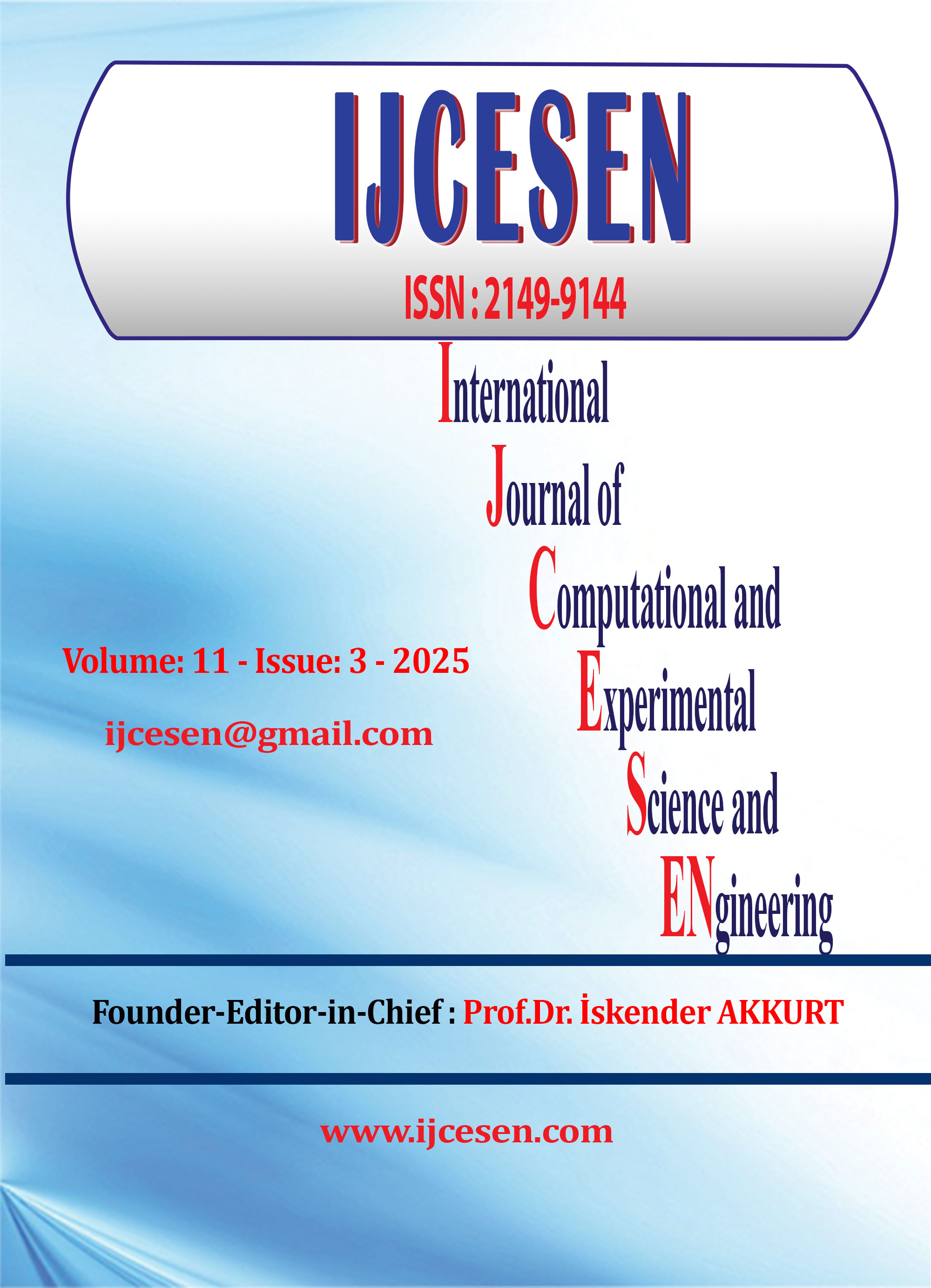The Impact of AI Tools on ESG-Based Sustainable Banking Practices: A Meta-Analysis & Conceptual Framework
DOI:
https://doi.org/10.22399/ijcesen.3198Keywords:
Artificial Intelligence, ESG Analysis, Banking, Natural Language Processing (NLP), Risk Models, Machine LearningAbstract
This study investigates the role of Artificial Intelligence (AI) tools in enhancing Environmental, Social, and Governance (ESG)-based sustainable banking practices. With increasing global emphasis on sustainable finance, banks are exploring AI technologies to improve ESG performance, risk management, and decision-making processes. Through a comprehensive metadata analysis of recent scholarly publications, this research identifies key trends, thematic focuses, and disciplinary contributions within the evolving landscape of AI-enabled ESG banking. Using a literature review guided by the SPAR 4 framework, the study analyzed 350 sources from 2015 to 2024, narrowing down to 70 key documents. Most research came from the United States (30%), the United Kingdom (25%), Germany (15%), and India (10%), with the remainder distributed across other countries. Additionally, the study proposes an integrated conceptual framework that elucidates the mechanisms through which AI supports ESG goals, addressing both opportunities and challenges such as data privacy, algorithmic bias, and regulatory compliance. Findings highlight the interdisciplinary nature of this domain, spanning finance, computer science, environmental science, and social sciences. The study concludes by outlining implications for financial institutions and regulators, as well as future research directions to validate and expand the conceptual model. This work contributes to bridging the knowledge gap between AI innovation and sustainable banking, offering insights for responsible adoption of technology in advancing ESG objectives.
References
[1] OECD. (2020). ESG investing: Practices, progress and challenges. OECD Business and Finance Outlook. https://doi.org/10.1787/3edfd5cd-en
[2] Deloitte. (2021). AI and ESG: The emerging imperative. Deloitte Insights. https://www2.deloitte.com
[3] Serafeim, G. (2020). How to build enduring ESG strategies. Harvard Business Review. https://hbr.org/2020/05/how-to-build-enduring-esg-strategies
[4] Barredo Arrieta, A., Díaz-Rodríguez, N., Del Ser, J., Bennetot, A., Tabik, S., Barbado, A., & Herrera, F. (2020). Explainable artificial intelligence (XAI): Concepts, taxonomies, opportunities and challenges toward responsible AI. Information Fusion, 58, 82–115. https://doi.org/10.1016/j.inffus.2019.12.012
[5] Kotsantonis, S., & Serafeim, G. (2021). Artificial intelligence in sustainable finance. Journal of Applied Corporate Finance, 33(2), 50–58.
[6] Amel-Zadeh, A., & Serafeim, G. (2018). Why and how investors use ESG information: Evidence from a global survey. Financial Analysts Journal, 74(3), 87–103. https://doi.org/10.2469/faj.v74.n3.2
[7] Bank of England. (2021). Key elements of the 2021 Biennial Exploratory Scenario: Financial risks from climate change.
[8] Refinitiv. (2021). Environmental, social and governance (ESG) scores: Refinitiv ESG methodology. https://www.refinitiv.com/en/sustainable-finance/esg-scores
[9] Truvalue Labs. (2021). AI-driven ESG analytics platform overview. https://www.truvaluelabs.com/
[10] Berg, T., Burg, V., Gombović, A., & Puri, M. (2022). On the rise of fintechs: Credit scoring using digital footprints. The Review of Financial Studies, 33(7), 2845–2897.
[11] Battiston, S., Mandel, A., Monasterolo, I., Schütze, F., & Visentin, G. (2017). A climate stress-test of the financial system. Nature Climate Change, 7(4), 283–288. https://doi.org/10.1038/nclimate3255
(HSBC, BNP Paribas, Barclays raporları ayrı verilmediği için yalnızca atıf yapılabilir; APA formatında raporları ayrı yazmak için kurumsal yazar ve başlıklar netleştirilmeli.)
[12] Tornatzky, L. G., & Fleischer, M. (1990). The processes of technological innovation. Lexington Books.
[13] Freeman, R. E. (1984). Strategic management: A stakeholder approach. Pitman.
[14] Barney, J. (1991). Firm resources and sustained competitive advantage. Journal of Management, 17(1), 99–120. https://doi.org/10.1177/014920639101700108
[15] DiMaggio, P. J., & Powell, W. W. (1983). The iron cage revisited: Institutional isomorphism and collective rationality. American Sociological Review, 48(2), 147–160. https://doi.org/10.2307/2095101
[16] Hafez, I. Y., & El-Mageed, A. A. A. (2025). Enhancing Digital Finance Security: AI-Based Approaches for Credit Card and Cryptocurrency Fraud Detection. International Journal of Applied Sciences and Radiation Research, 2(1). https://doi.org/10.22399/ijasrar.21
[17] Olola, T. M., & Olatunde, T. I. (2025). Artificial Intelligence in Financial and Supply Chain Optimization: Predictive Analytics for Business Growth and Market Stability in The USA. International Journal of Applied Sciences and Radiation Research, 2(1). https://doi.org/10.22399/ijasrar.18
[18] Shanmugam Muthu, R S, N., A. Tamilarasi, Ahmed Mudassar Ali, S, S., & S. Jayapoorani. (2025). AI-Powered Predictive Digital Twin Platforms for Secure Software-Defined IoT Networks. International Journal of Computational and Experimental Science and Engineering, 11(3). https://doi.org/10.22399/ijcesen.2497
[19] R. Vidhya, D. Lognathan, S, S., P.N. Periyasamy, & S. Sumathi. (2025). Anomaly Detection in IoT Networks Using Federated Machine Learning Approaches. International Journal of Computational and Experimental Science and Engineering, 11(3). https://doi.org/10.22399/ijcesen.2485
[20] Ibeh, C. V., & Adegbola, A. (2025). AI and Machine Learning for Sustainable Energy: Predictive Modelling, Optimization and Socioeconomic Impact In The USA. International Journal of Applied Sciences and Radiation Research, 2(1). https://doi.org/10.22399/ijasrar.19
[21] Fowowe, O. O., & Agboluaje, R. (2025). Leveraging Predictive Analytics for Customer Churn: A Cross-Industry Approach in the US Market. International Journal of Applied Sciences and Radiation Research, 2(1). https://doi.org/10.22399/ijasrar.20
[22] Makin , Y., & Pavan K Gondhi. (2025). A Quantitative Framework for Portfolio Governance Using Machine Learning Techniques. International Journal of Computational and Experimental Science and Engineering, 11(3). https://doi.org/10.22399/ijcesen.2474
[23] Chui, K. T. (2025). Artificial Intelligence in Energy Sustainability: Predicting, Analyzing, and Optimizing Consumption Trends. International Journal of Sustainable Science and Technology, 1(1). https://doi.org/10.22399/ijsusat.1
[24] G Nithya, R, P. K., V. Dineshbabu, P. Umamaheswari, & T, K. (2025). Exploring the Synergy Between Neuro-Inspired Algorithms and Quantum Computing in Machine Learning. International Journal of Computational and Experimental Science and Engineering, 11(3). https://doi.org/10.22399/ijcesen.2484
[25] Kumari, S. (2025). Machine Learning Applications in Cryptocurrency: Detection, Prediction, and Behavioral Analysis of Bitcoin Market and Scam Activities in the USA. International Journal of Sustainable Science and Technology, 1(1). https://doi.org/10.22399/ijsusat.8
Downloads
Published
How to Cite
Issue
Section
License
Copyright (c) 2025 International Journal of Computational and Experimental Science and Engineering

This work is licensed under a Creative Commons Attribution 4.0 International License.





